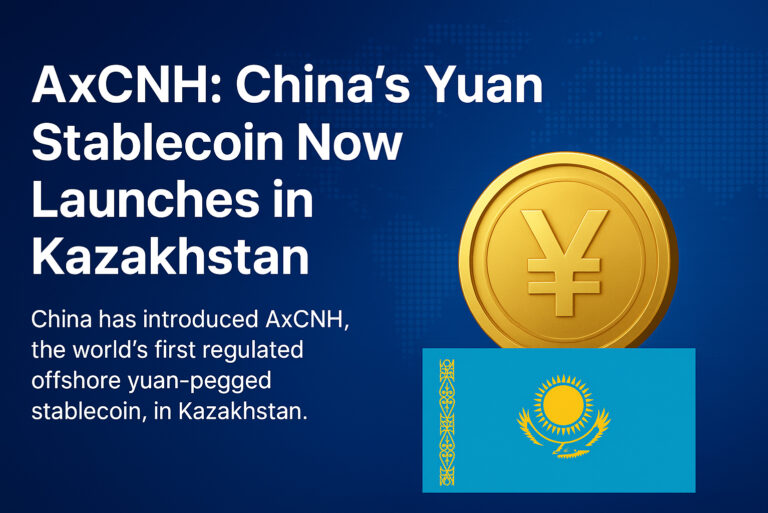Premium Biz Post – China has taken a significant step to bolster the international presence of the yuan. They introduced AxCNH, the world’s first regulated offshore yuan-pegged stablecoin, in Kazakhstan. This initiative has the potential to reshape cross-border transactions. Furthermore, it challenges the dominance of the U.S. dollar in global trade.

What Is AxCNH?
AxCNH is a stablecoin pegged to the offshore Chinese yuan (CNH). AnchorX, a Hong Kong-based fintech company, developed it. This stablecoin operates on Conflux, a Chinese government-backed blockchain network. Therefore, it ensures high-speed and secure transactions.
AxCNH launched on September 17, 2025. Its primary goal is to facilitate seamless cross-border payments and settlements. Specifically, it benefits enterprises involved in China’s Belt and Road Initiative (BRI).
Strategic Importance of AxCNH
The introduction of AxCNH signals a strategic move by China to internationalize the yuan. In other words, China seeks to reduce its reliance on the U.S. dollar in global trade. By leveraging blockchain technology, China aims to enhance the efficiency and security of cross-border transactions. This development aligns with China’s broader economic objectives. Additionally, it supports their efforts to strengthen economic ties with participating BRI countries.
Read More : ”Branches into Sculptures Creativity with Artistic and Economic Value”
Kazakhstan: A Strategic Partner
Kazakhstan is Central Asia’s largest economy. As a result, the country is a key partner in the BRI and plays a pivotal role in this initiative. The nation’s participation in the AxCNH launch underscores its commitment to fostering digital innovation. Equally important, it enhances economic cooperation with China. Kazakhstan’s financial regulators have granted AnchorX the necessary licenses to issue and operate AxCNH. Indeed, this marks a significant step in the country’s digital finance landscape.
Potential Impact on Global Trade
The deployment of AxCNH is expected to have far-reaching implications for global trade dynamics. AxCNH can streamline transactions, reduce costs, and mitigate exchange rate risks. This is because it provides a stable and efficient alternative to traditional currencies. This development could pave the way for wider adoption of digital currencies in international trade. Consequently, it challenges the current dominance of the U.S. dollar.
Future Prospects
Looking ahead, AxCNH’s success could lead to its adoption by other countries and enterprises engaged in cross-border trade. Currently, more nations are exploring the potential of digital currencies. Thus, AxCNH may serve as a model for future initiatives. These initiatives aim to enhance the efficiency and security of global trade transactions.



